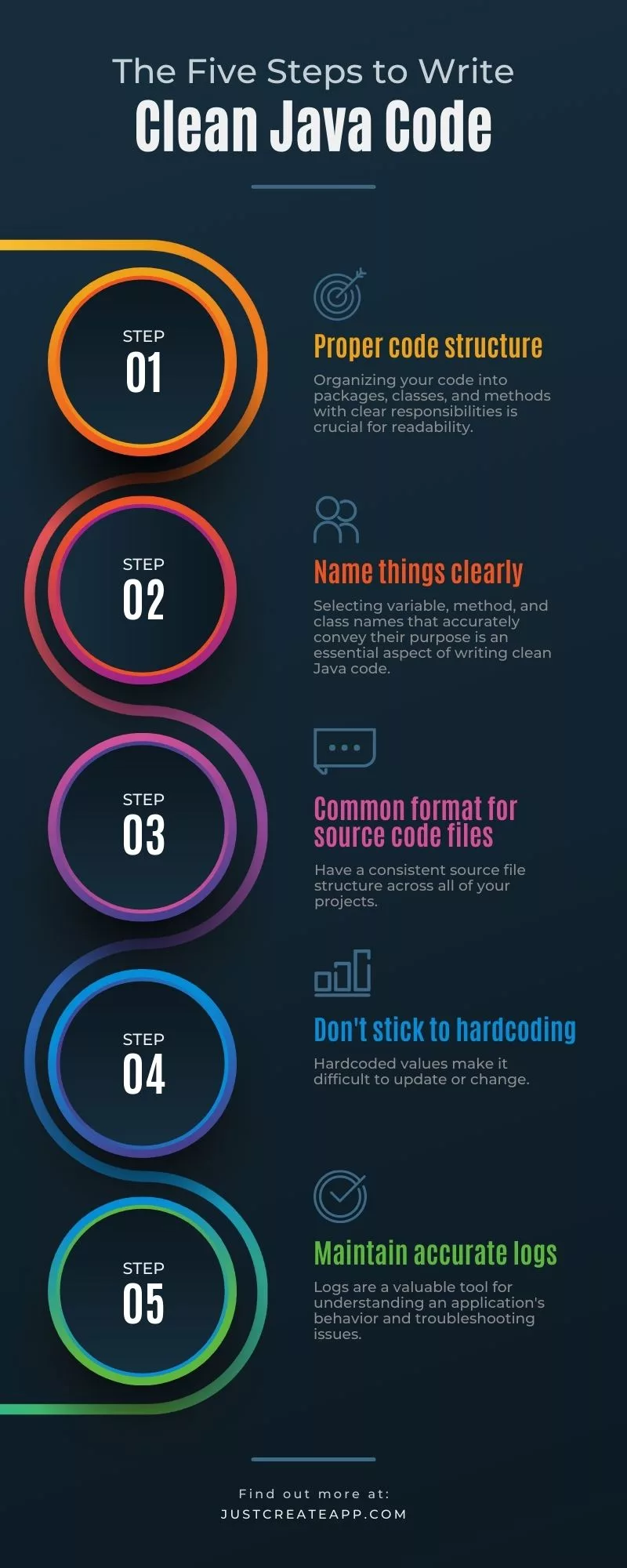When you hire Java coders, it’s essential to make sure they’re familiar with the best practices for writing clean Java code. The ability to hire Java app developers is necessary to create applications that are easy to maintain, efficient, and scalable. Whether you’re seeking to hire a Java developer or collaborate with a whole team of pros, this article will provide a deep dive into the world of clean Java code and how it may improve your project. So, what are we waiting for? Let’s go!
You can also check the list of top Java development companies.
What is a Clean code?
Clean code is writing code that is simple for others to read, maintain, and comprehend. An application’s efficiency, stability, and scalability are guaranteed by clean Java code. While working on larger projects with several team members, it becomes essential since effective cooperation depends on rapidly understanding the code. When you hire a Java coder, you want someone who adheres to these principles and consistently delivers clean, well-structured code.
By investing in writing clean Java code, you not only promote a positive team culture but also save time and resources in the long run. Implementing clean code practices leads to fewer bugs, making it easier to spot and fix issues as they arise.
Adhering to clean code principles creates a codebase that can easily adapt to changing requirements, reducing the time spent on refactoring and rewriting code during the development process. Ultimately, investing in clean Java code ensures the longevity and success of your software project, which is an essential aspect to consider when hiring a Java coder.
Also read: What is the future of programming?
How to Write Clean Code in Java?
The task of writing clean Java code may appear daunting at first, but it is actually quite manageable with some direction. Let’s have a look at some guidelines for producing high-quality Java code.
#1. Maintain proper code structure
Organizing your code into packages, classes, and methods with clear responsibilities is crucial for achieving readability and maintainability in your Java projects. Carefully grouping related classes together and adhering to the single responsibility principle helps keep your codebase organized and comprehensible. When you hire a Java programmer, ensure that they possess the ability to create clean, well-structured code by following these practices.
Because of this, your development team will have an easier time navigating the code, understanding its purpose, and reducing the likelihood of introducing defects as a result of miscommunication or confusion about roles and responsibilities.
#2. Name things clearly and specifically
Selecting variable, method, and class names that accurately convey their purpose is an essential aspect of writing clean Java code. Employing meaningful names not only simplifies comprehension for other developers but also mitigates the risk of confusion and misinterpretation. When you hire Java engineers, it’s crucial to ensure that they possess the ability to craft expressive, easy-to-understand names in their code.
Maintaining a high standard of code quality throughout the development process relies heavily on the developer’s attention to detail, which is especially crucial when working in a team or on a large-scale project.
#3. Create a common format for source code files
One of the best ways to make your Java code consistent and easy to maintain is to have a consistent source file structure across all of your projects. When packages, imports, classes, and methods are all declared in the same sequence, developers have a straightforward blueprint to work from. Developers save a lot of time and energy by sticking to a consistent format while navigating and understanding the codebase, whether it’s to find individual bits of code or to grasp the general architecture.
Since it generates a familiar structure that encourages productivity and supports seamless communication, this consistency becomes especially useful when working with big teams or migrating between various projects. If you want your engineers to be productive and focused on providing robust, scalable, and high-performing apps, then you need to implement a consistent source file format.
Also, have a look at the latest trends in Fitness Software Development.
#4. Use a consistent coding formatting
The readability of the codebase as a whole must use a formatting style that is consistent throughout. It includes any indentation, line breaks, or code blocks that may be present.
Use tools like code formatters and linters to enforce a uniform style throughout your code automatically.
#5. Avoid using procedures that have an excessive amount of parameters
A method’s purpose and behavior may be obscured by an excessive number of parameters, making it difficult for developers to grasp its functionality. Strive for no more than three or four parameters, and encapsulate related data in objects or parameter objects if necessary.
Adhering to this practice improves code readability and maintainability, allowing developers to understand the method’s intent quickly and reducing the likelihood of introducing errors during modifications or refactoring processes.
#6. Don’t stick to hardcoding
Hardcoded values make it difficult to update or change the behaviour of an application. Instead, use constants, configuration files, or external resources to store and manage these values.
#7. Maintain accurate logs
Logs are a valuable tool for understanding an application’s behavior and troubleshooting issues. Use a logging framework to create informative and well-structured log messages, and avoid writing overly verbose logs that are hard to comprehend.
#8. Take care of code duplication
Code duplication leads to increased maintenance efforts and a higher likelihood of bugs. Refactor your code to eliminate duplication by extracting common functionality into reusable methods or classes.
#9. Yes, code comments are good
While clean code should be largely self-explanatory, adding comments can help explain complex logic or provide additional context. Keep comments concise and informative; remember to update them when the code changes.
You may also like reading Free AI and No-Code Tools to Start Making Money Online Now.

Final Words
Writing clean Java code is an essential skill for any Java programmer. By following the best practices outlined in this article, you can create easy-to-maintain, efficient, and scalable applications. And remember, when you hire Java coders from EPAM Anywhere, you can expect professionals who are well-versed in these practices and can deliver clean, maintainable code for your projects.





[…] Also have a look at: Best Practices for Writing Clean Java Code: Powerful Techniques for Unrivaled Efficiency! […]